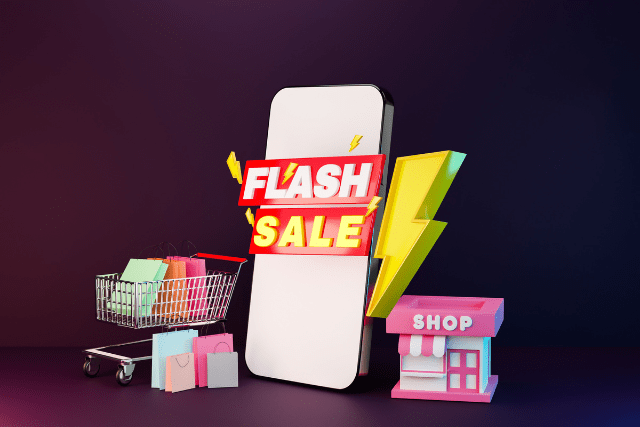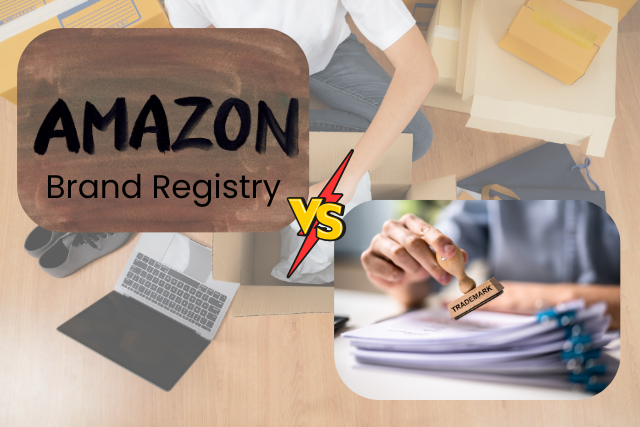Flash sales are a trendy marketing tactic in which businesses provide time-limited discounts on products and services. This article will give a brief explanation of the flash sales concept, the potential advantages they bring, and effective strategies for optimizing results.
We will address techniques for promoting flash sales, tools to help manage them, and methods for measuring their success. We will also discuss the long-term benefits of using flash sales as a marketing tool.
Table of Contents
Key Takeaways
- Flash sales are an effective marketing tool for driving customer engagement and generating revenue.
- Adequate planning, timing, and website optimization are crucial for a successful flash sale campaign.
- Inventory management and post-sale analysis are important for maximizing sales and improving future campaigns.
- Factors contributing to flash sale success include cost considerations, target audience, inventory management, and customer loyalty.
What Is a Flash Sale?
A flash sale is a promotional sales event that offers customers the opportunity to purchase goods at discounted prices for a short period. It is an effective marketing tool that can be used to drive customer engagement and generate revenue.
Advantages of Flash Sales:
- Urgency and Scarcity: The limited time frame of a flash sale creates a sense of urgency among customers, prompting quick buying decisions. The scarcity of discounted products can also drive demand, making customers more likely to purchase before stocks run out.
- Increased Traffic: Flash sales can draw much attention, leading to a website or store traffic surge. This increased visibility can introduce new customers to your brand.
- Inventory Management: Businesses can quickly sell older inventory, making new products available. This is especially useful for seasonal products or fashion items.
- Customer Engagement: Flash sales can be a great way to engage with your customer base, especially if integrated with other marketing tools like email campaigns or social media promotions.
- Boost in Sales: A well-executed flash sale can increase sales quickly, improving cash flow.
Disadvantages of Flash Sales:
- Technical Glitches: A sudden surge in traffic can crash websites if they’re unprepared for the increased load.
- Reduced Profit Margins: Heavy discounts might lead to reduced profits on each sale. Ensuring the volume increase compensates for the profit reduction per item is vital.
- Customer Expectations: Regular flash sales might condition customers to wait for discounts, affecting regular sales.
- Logistical Challenges: A sudden increase in sales can strain shipping and handling resources, potentially leading to delivery delays and unsatisfied customers.
- Potential for Negative Feedback: Customers who miss out on deals or face website issues might voice their frustrations online, affecting brand reputation.
While flash sales offer numerous benefits and can be a powerful tool in a marketer’s arsenal, they come with inherent risks. Businesses should use them judiciously, ensuring they’re well-prepared to handle the increased demand and potential challenges.
What Strategies Can Be Used to Maximize Success?
To maximize the success of a flash sale, businesses should employ a combination of strategic planning, targeted marketing, and logistical readiness. Here are some strategies that can be implemented:
1. Plan Ahead
Adequate planning is essential for a successful flash sales campaign. Costing should be planned, considering the target audience and customer engagement. Market research should be conducted to understand pricing strategies and how customers will respond to discounts.
It is also important to plan promotional activities, such as advertising campaigns or email blasts, that are tailored to the target market. Additionally, setting objectives and goals for the flash sale can help measure its success and identify areas for improvement.
Resources must be allocated appropriately to ensure sufficient personnel and materials are available during sales. These considerations form a comprehensive plan for a successful flash sale campaign.
2. Timing Is Essential
Timing is essential when running a flash sale campaign, as it can determine the promotion’s success. Promotional timing must be carefully considered to maximize customer outreach and capitalize on inventory control.
This involves establishing suitable pricing approaches according to market trends and determining an adequate flash duration that allows customers ample time to benefit from the offer.
Google Trends is a very nice utility in this regard. Moreover, it is free.
It is also crucial to consider potential disruptions or holidays that could affect promotional timing to prevent external factors from hindering campaigns.
3. Optimize Website
Optimizing the website for a flash sale campaign is critical for customer outreach and inventory management. Website speed, user interfaces, navigation, visuals, and SEO optimization are all key components that must be addressed during the design process.

Optimizing website speed is important to achieve maximum success with an online marketing strategy by ensuring that page loading times are as short as possible. Additionally, creating user-friendly interfaces helps make navigation easier and more intuitive.
Designing effective visuals can also help draw attention to important information about the flash sale campaign. Optimizing SEO can help bring in more targeted traffic from search engines.
4. Advance Promotion
Promoting a flash sale campaign in advance can help ensure greater awareness of the event and better results. By setting goals, tracking results, creating buzz, and limiting deals, businesses can optimize their outreach efforts and get more customers interested in participating.
To promote early, businesses should use multiple channels, such as organic search engine optimization (SEO) techniques, social media marketing (SMM), email campaigns, and online advertising.
Targeted Marketing
Focus on delivering targeted messages to potential customers and offering incentives for partner sales. This will maximize visibility and increase the chances of a successful flash sale campaign.
Here are some popular tools and platforms for delivering targeted messages:
- Email Marketing Platforms:
- Mailchimp offers audience segmentation, enabling you to send tailored emails based on user behaviour, location, and other parameters.
- SendinBlue provides SMS and email marketing tools with advanced segmentation capabilities.
- ActiveCampaign is known for its advanced automation and personalization features.
- Customer Relationship Management (CRM) Software:
- HubSpot integrates marketing, sales, and service software, focusing on inbound techniques. Offers tools to deliver targeted messages based on user behaviour and interactions.
- Salesforce is a robust CRM that can segment customers and send personalized messages.
- Advertising Platforms:
- Google Ads: Use remarketing lists to target past website visitors or create similar audiences.
- Facebook Ads Manager: This enables you to target ads based on user demographics, interests, behaviour, and more.
- LinkedIn Campaign Manager: Ideal for B2B marketing, allowing targeting by job title, company, industry, etc.
- Push Notification Tools:
- OneSignal delivers web and mobile push notifications based on user behaviour and segmentation.
- PushCrew allows targeting and segmentation to deliver relevant push messages.
- SMS Marketing:
- Twilio offers a platform to send targeted SMS messages based on various parameters.
- BulkSMS provides a straightforward interface for SMS marketing with some targeting features.
- Chatbots and Messaging Platforms:
- ManyChat is a chatbot tool for Facebook Messenger that offers targeted messaging based on user interactions.
- Intercom delivers targeted messages through website chat, email, and app push notifications.
- Personalization Platforms:
- Optimizely: Allows for web experimentation, personalization, and targeted messaging.
- Dynamic Yield: Offers an AI-based platform for personalizing web experiences and delivering targeted content.
Attract customers with Engaging Promotions.
Design enticing graphics to attract your audience. There are several user-friendly platforms and software solutions you can explore:
- Canva is an online platform with templates for various purposes, including social media, banners, ads, and more. It’s beginner-friendly and offers a wide variety of design elements.
- Adobe Spark: A simplified design tool from Adobe that allows users to create graphics, web pages, and short videos.
- GIMP is a free, open-source alternative to Photoshop with advanced graphic design capabilities.
- Piktochart is ideal for infographics, presentations, and printables.
- Crello: Like Canva, it offers design templates and elements to create engaging visuals.

5. Terms & Conditions
It is important for businesses to include clear and concise terms and conditions when launching a flash sale campaign to ensure customer comprehension of any restrictions or requirements. Setting guidelines for customers should cover topics such as:
- Sale duration: How long will the promotion last?
- Pricing structure: What discounts are offered, if any?
- Customer expectations: Are there quantity limits?
- Legal implications: Do customers need to agree to terms and conditions before purchasing?
- Refunds and exchanges policy: Can customers return/exchange items purchased during the flash sale?
Creating comprehensive and understandable terms and conditions that address these topics allows businesses to set clear customer expectations while avoiding legal implications.
6. Manage Inventory
To ensure an effective flash sale campaign, businesses must have an organized inventory management system.
This means forecasting inventory needs and developing supply chain management strategies to meet customer demand as efficiently and cost-effectively as possible.
Pricing and discount strategies should be evaluated against customer analytics to maximize profitability while creating a positive customer experience.
An effective inventory strategy is paramount for a successful flash sale campaign. When managed correctly, businesses can increase sales while controlling costs.

7. Post-Sale Analysis
After a flash sale campaign, it is important to analyze the results to evaluate its effectiveness and adapt strategies for future sales.
Gaining data insights into customer engagement and pricing strategies can enable businesses to understand how different marketing channels perform.
Analyzing sales trends can provide valuable information on when, why, and at what price customers buy.
By understanding this data, businesses can implement more effective flash sale campaigns that better meet customer needs while optimizing profitability.
Therefore, post-sale analysis is an essential aspect of successful flash sale campaigns.
What Kinds of Products Should Be Included in a Flash Sale?
Advisably, a flash sale should include products in demand and likely to sell quickly. Careful brand selection, targeted customers, and sale duration are key factors when considering which types of products to include. For instance:
- A well-known brand with a good reputation will attract more customers than an unknown one;
- Products that appeal to the intended customer base should be chosen;
- The length of the sale needs to be long enough for bargain pricing while not being so long that it diminishes customer satisfaction.
Overall, careful product selection is essential for a successful flash sale campaign.
How Can You Promote a Flash Sale?
A flash sale can be promoted in various ways, including through email campaigns and social media. Tactics such as creating promotional videos, offering discount strategies, and drawing attention to the product are key elements for success.
To engage an audience effectively, use creative language that stands out from the competition and drives customers towards the sale.
Utilizing social media platforms like Instagram or Twitter can quickly spread information about the product and draw more traffic to the website.
Leveraging influencers with significant reach on those platforms can also increase brand awareness and customer engagement.
Promotional tactics should be tailored to reach the target audience and increase sales during a flash sale event.
What Factors Can Contribute to a Flash Sale’s Success?
Different elements can contribute to the prosperity of a flash sale. Cost considerations such as markdowns, promotions, and complimentary shipping can attract customers.
It is also important to identify the target audience and tailor the message to appeal to them. A risk assessment must be done for inventory management, and customer expectations should be managed accordingly.
Building customer loyalty through brand recognition and utilizing customer service channels are essential to any successful campaign.
Knowing when to run a flash sale is key; timing it correctly can help maximize profits while minimizing costs.
What Should You Avoid When Running a Flash Sale?
It is important to consider potential pitfalls when running a flash sale event to maximize success. Avoiding mistakes, such as incorrect pricing strategies or poor customer engagement, is essential for a successful campaign.
- Marketing tactics and promotional strategies should be carefully considered before launch. It is advisable to survey customers to identify their needs and preferences before launching the flash sale.
- Companies should ensure that discounts are offered on products most likely to appeal to customers.
- It is necessary to create an effective communication strategy so customers can easily access information about the sale.
This way, companies can increase the likelihood of success with their flash sale campaigns.

What Tools Can Help Manage a Flash Sale?
Tools exist that can assist in managing a flash sale event. The selection of the proper tools is essential to ensuring success.
- Data tracking software will help monitor customer engagement, pricing strategies, and sale optimization.
- An analytics platform can provide insight into how customers interact with campaigns and help fine-tune flash sales for maximum effectiveness.
- Customer relationship management (CRM) software can foster better customer relationships and increase engagement.
- Automated marketing platforms may aid in creating more personalized messaging and promotions to elevate brand awareness.
What Are the Long-Term Benefits of Flash Sales?
Flash sales offer strategic advantages such as customer loyalty and flexible pricing structures.
Sale duration and discount levels are also factors that determine the success of an individual sale. By offering customers discounted deals for short periods, companies can increase their overall profits in the long run while simultaneously building customer loyalty.
Moreover, companies can employ flash promotions to test fresh goods or pricing tactics without making a long-term commitment, allowing them to recognize and seize market prospects promptly.
Frequently Asked Questions
What Are the Best Practices for Running a Flash Sale?
The best practices for running a flash sale involve enhanced visibility through effective marketing, budget considerations to maximize returns, customer engagement to build relationships, and targeted promotion to ensure maximum reach.
How Often Should a Flash Sale Be Held?
Flash sales frequency highly depends on discount levels, targeted audiences, competitor analysis, and pricing strategies. Careful consideration should be taken when planning the sale’s frequency to maximize its success.
Is There a Limit to the Number of Sales Included in a Flash Sale?
When planning a flash sale, there is no fixed limit to the number of sales that can be included; however, timing implications and cost management should be considered when determining the promotional strategies, product selection, and target market.
What Are the Major Risks Associated With Running a Flash Sale?
Running a flash sale can be risky due to potential overbuying, stockouts, discount fatigue, price erosion, and inadequate inventory tracking. Careful planning is essential to avoid these risks and ensure the successful execution of the campaign.
How Can Flash Sales Be Used to Increase Customer Loyalty and Retention?
Flash sales can increase customer loyalty and retention by incentivizing customers with reward systems, special discounts, targeting campaigns, and segmented offers. This approach encourages continual engagement with the brand, creating a mutually beneficial relationship.
Conclusion
Flash sales can greatly increase sales, build customer loyalty, and introduce customers to new products.
Retailers can maximise their success by creating an attractive flash sale campaign with carefully chosen products, promotional strategies, and tools to help manage the sale.
Measuring the success of the flash sale helps managers understand which elements were successful and which need improvement for future campaigns.
Flash sales are beneficial in the short term and create long-term advantages such as increased loyalty and brand recognition. With these tips, retailers can ensure their flash sales are successful.







